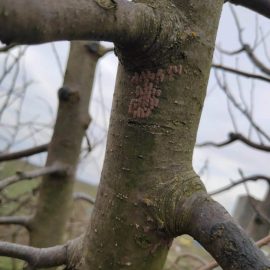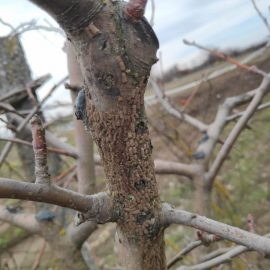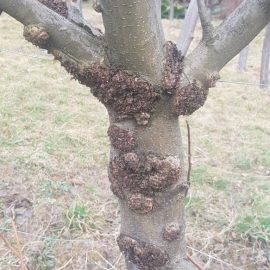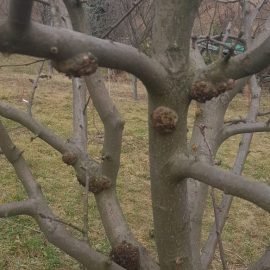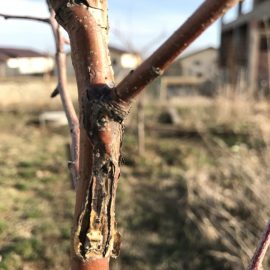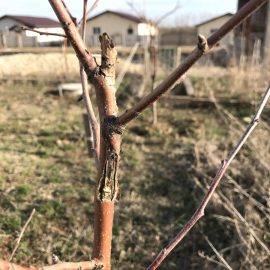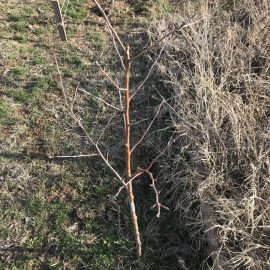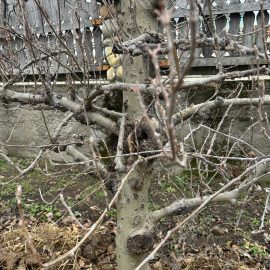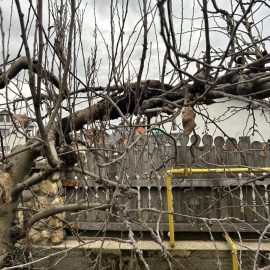Apple tree treatments, pest and disease control
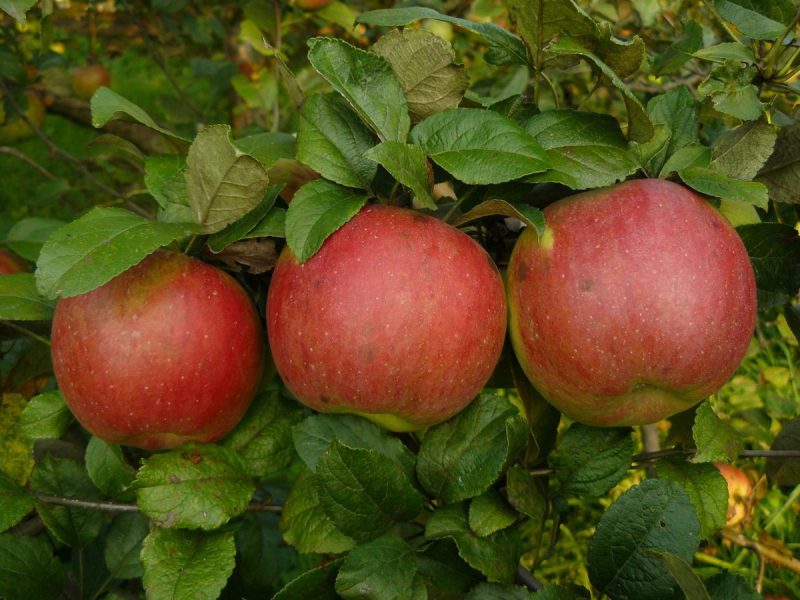
Apple tree (Malus domestica) is a species belonging to the Rosaceae family. The apple tree has in its composition several elements indispensable to the body: iron, phosphorus, calcium, cellulose, carbohydrates, magnesium, vitamins (A, B1, B2, C). Apples are tonic, diuretic, depurative, antiseptic and laxative. This fruit tree has a relatively small trunk and a widely branched crown. The apple leaves are oval and are arranged alternately. The flowers have five petals and are white with a slight tinge of pink. The apple is native to Asia and is thought to have been cultivated in Europe since the Roman Empire.
The main diseases of apple trees
VIRUSES
Apple mosaic virus
The most common form of attack is manifested on the leaves as irregular yellow spots. The attack is usually seen on one side of the leaves. When temperatures reach 18-20 °C, the spots turn brown. Following the attack, the leaves fall off. This leads to lower production and weaker trees. The virus is transmitted by grafting, pollen, and infected apple seeds. In the nursery, it can be transmitted by contact between roots.
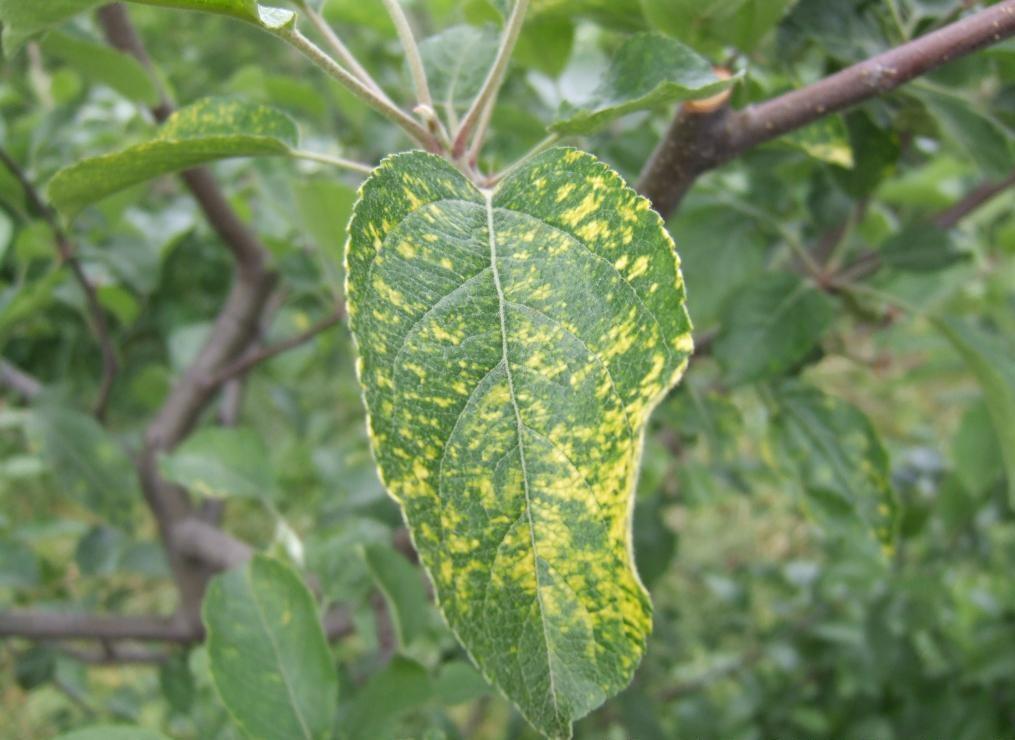
Prevention and control measures:
- using healthy grafts and rootstocks;
- removing infected trees from the orchard;
- planting resistant apple varieties.
Apple chlorotic leaf spot virus
Circular or striped discoloration spots appear on apple leaves. Due to high temperatures, these spots can turn brown. In some cases, the leaf veins may turn yellow. Following the attack, losses can reach 30-40%.
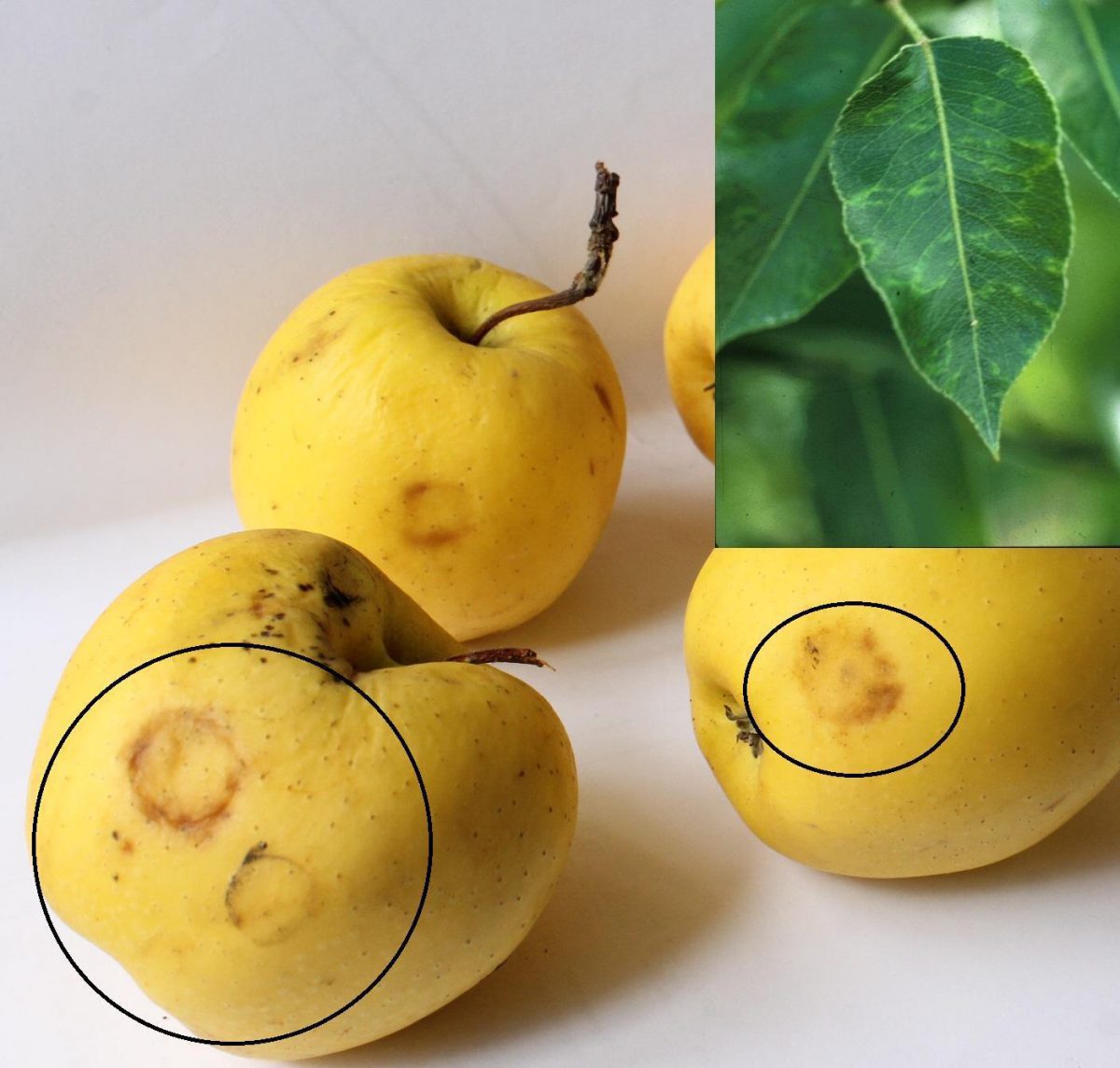
Prevention and control measures:
- using healthy grafts and rootstocks;
- planting resistant apple varieties;
- checking apple saplings before planting.
MYCOPLASMOSIS
Apple proliferation (Phytoplasma mali)
The first symptoms include tree growth stagnation. The terminal buds go dormant and the axial buds develop strongly. The apple trees become twiggy and bushy. The trees show vertical growth. The leaves are smaller and the fruits are small and tasteless. The disease is transmitted by grafting and by contact between roots. The disease is also transmitted by several species of leafhoppers.
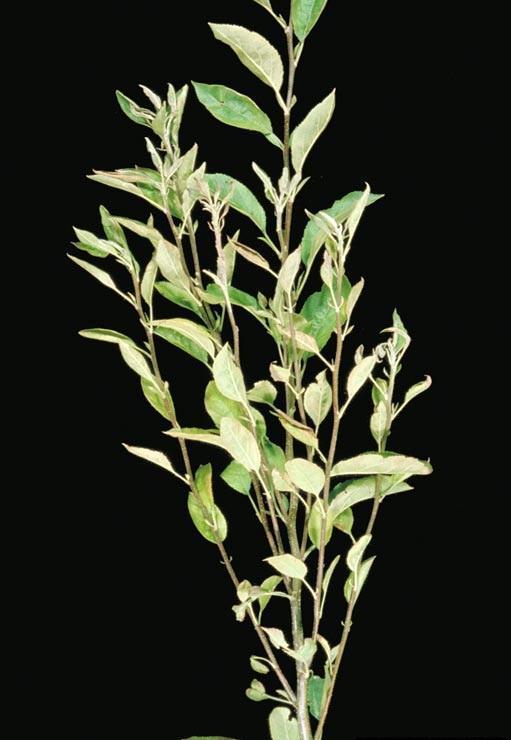
Prevention and control measures:
- using healthy grafts and rootstocks;
- checking apple saplings before planting;
- balanced fertilization and rational irrigation.
BACTERIOSIS
Bacterial canker (Pseudomonas syringae pv. syringae)
The disease attacks all aerial parts of the trees and is favored by cold and wet weather. Black spots appear on the leaves in the space between the veins. The spots merge and destroy the whole leaf. This disease attacks the inflorescences but does not progress to the branches. Attacked twigs turn brown but do not bend. The bark on affected branches cracks and the wounds become light-coloured. Blackish spots appear on the fruit, from which the bacterial exudate leaks.
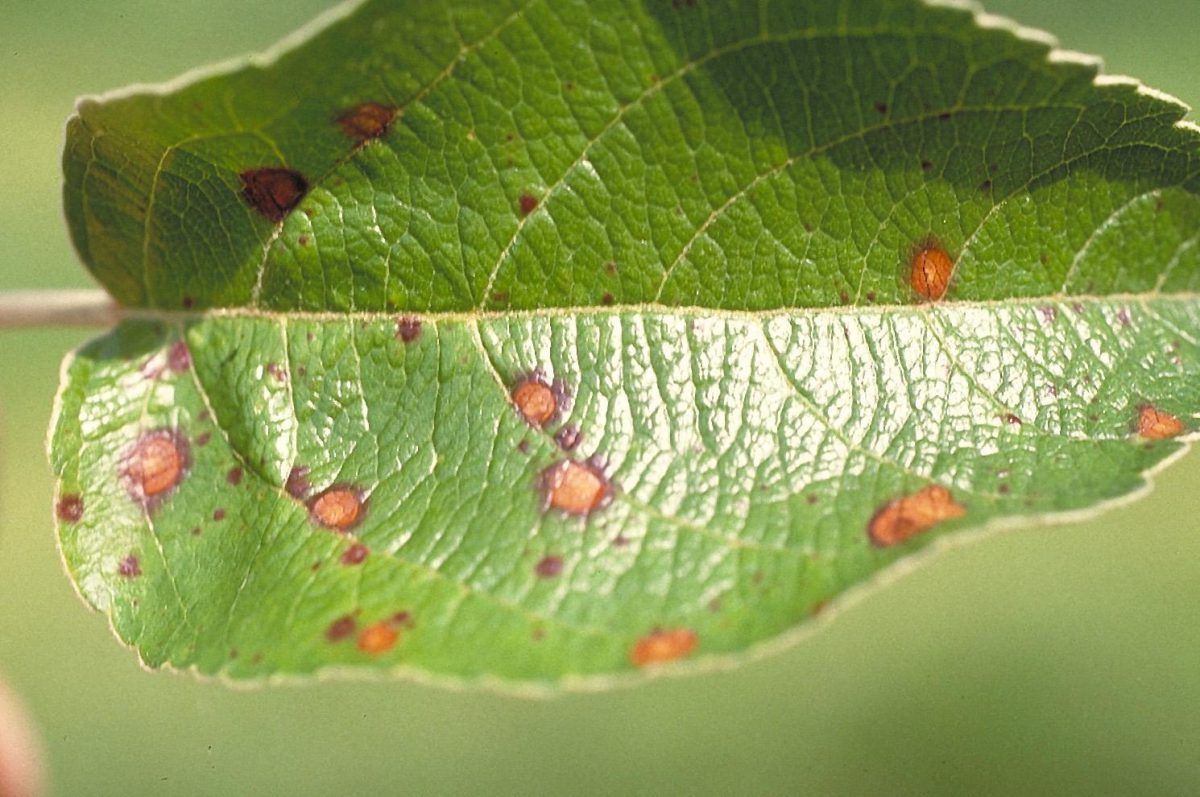
Prevention and control measures:
- pruning the affected branches;
- gathering and burning fallen leaves and fruits;
- chemical treatments with specific fungicides.
Fire blight (Erwinia amylovora)
It is a very dangerous disease that can compromise the entire orchard. The appearance of this disease is favored by high atmospheric humidity, wind, precipitation, and high temperatures. Trees attacked by this disease appear to be burnt by fire. The twigs wither and turn brown, and the fruit turns black or becomes spotted. In wet weather, on the affected areas appear the bacterial exudate.
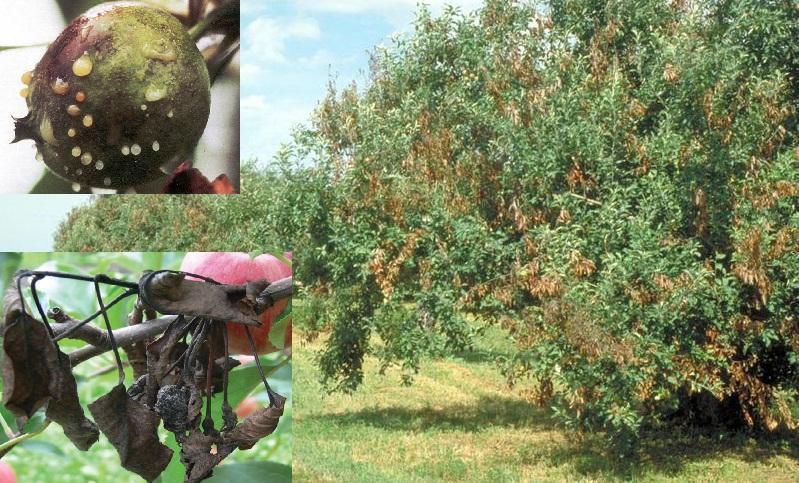
Prevention and control measures:
- pruning and burning the affected branches to healthy tissues;
- chemical treatments, applied after each rain with specific fungicides.
Recommended products
-
You can find products on a different store
Change Store -
You can find products on a different store
Change Store -
You can find products on a different store
Change Store -
You can find products on a different store
Change Store -
You can find products on a different store
Change Store -
You can find products on a different store
Change Store -
You can find products on a different store
Change Store -
You can find products on a different store
Change Store -
You can find products on a different store
Change Store -
You can find products on a different store
Change Store -
You can find products on a different store
Change Store -
You can find products on a different store
Change Store -
You can find products on a different store
Change Store -
You can find products on a different store
Change Store -
You can find products on a different store
Change Store -
You can find products on a different store
Change Store -
You can find products on a different store
Change Store -
You can find products on a different store
Change Store -
You can find products on a different store
Change Store -
You can find products on a different store
Change Store -
You can find products on a different store
Change Store -
You can find products on a different store
Change Store -
You can find products on a different store
Change Store -
You can find products on a different store
Change Store
Crown gall (Agrobacterium radiobacter pv. tumefaciens)
The disease appears as tumors (galls), which vary in size depending on the plant’s age and the affected organ. Initially, small, smooth, and soft tumors appear on roots, stems, and rarely on branches or leaves. With time, the tumors enlarge, become brown or blackish-brown, and acquire a rough appearance. The pathogen enters the apple tree through wounds caused by nematodes, hail, insects, etc. The appearance of this disease is also favored by temperatures between 22 and 30 °C and atmospheric humidity of 80 %.
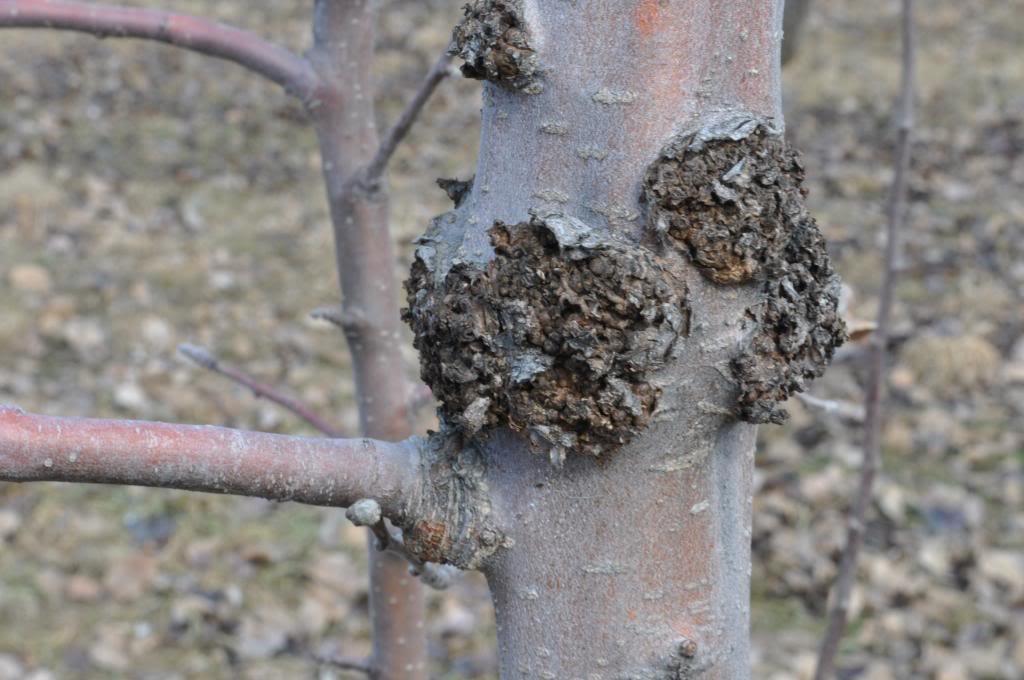
Prevention and control measures:
- sorting apple saplings before planting;
- apple saplings should be planted on land that has been prepared accordingly;
- disinfecting scissors and tools when moving from one tree to another;
- pruning affected branches up to the healthy area, applying treatment with Bordeaux mixture, and covering wounds with tree wound sealer;
- soaking the sapling roots in a solution of Bordeaux mixture of 1%;
- treatments during vegetation with copper-based products.
Recommended products
-
You can find products on a different store
Change Store -
You can find products on a different store
Change Store -
You can find products on a different store
Change Store -
You can find products on a different store
Change Store -
You can find products on a different store
Change Store -
You can find products on a different store
Change Store -
You can find products on a different store
Change Store -
You can find products on a different store
Change Store -
You can find products on a different store
Change Store -
You can find products on a different store
Change Store -
You can find products on a different store
Change Store -
You can find products on a different store
Change Store -
You can find products on a different store
Change Store -
You can find products on a different store
Change Store -
You can find products on a different store
Change Store -
You can find products on a different store
Change Store -
You can find products on a different store
Change Store -
You can find products on a different store
Change Store -
You can find products on a different store
Change Store -
You can find products on a different store
Change Store -
You can find products on a different store
Change Store -
You can find products on a different store
Change Store -
You can find products on a different store
Change Store -
You can find products on a different store
Change Store
MYCOSIS
Nectria canker (Neonectria galligena)
The disease enters the apple through wounds resulting from pruning. The bark in the affected area exfoliates and the tissue becomes sunken. This gives the affected area a cancerous appearance. The fungus can attack all aerial organs, including fruit. They rot and fall off. If the attack is present on the stem, the tree will wither irreversibly.
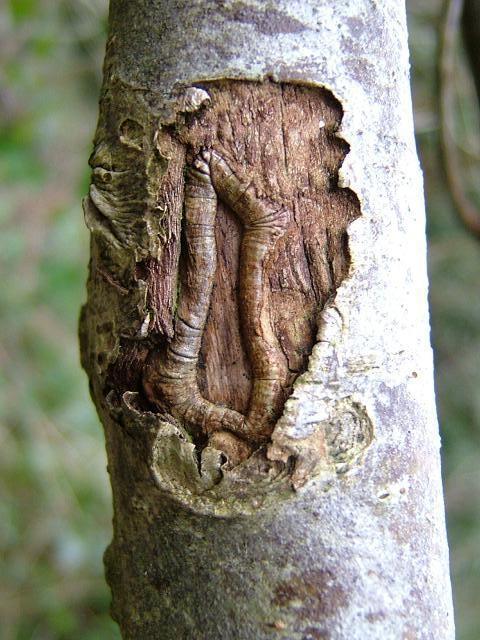
Prevention and control measures:
- checking saplings before planting;
- sterilizing tools with alcohol or chlorine;
- balanced irrigation and fertilization;
- covering the wounds resulting from maintenance work with tree wound sealer;
- pruning of affected branches.
Recommended products
-
You can find products on a different store
Change Store -
You can find products on a different store
Change Store -
You can find products on a different store
Change Store -
You can find products on a different store
Change Store -
You can find products on a different store
Change Store -
You can find products on a different store
Change Store -
You can find products on a different store
Change Store -
You can find products on a different store
Change Store -
You can find products on a different store
Change Store -
You can find products on a different store
Change Store -
You can find products on a different store
Change Store -
You can find products on a different store
Change Store -
You can find products on a different store
Change Store -
You can find products on a different store
Change Store -
You can find products on a different store
Change Store -
You can find products on a different store
Change Store -
You can find products on a different store
Change Store -
You can find products on a different store
Change Store -
You can find products on a different store
Change Store -
You can find products on a different store
Change Store -
You can find products on a different store
Change Store -
You can find products on a different store
Change Store -
You can find products on a different store
Change Store -
You can find products on a different store
Change Store
Apple scab (Venturia inaequalis)
This disease attacks all aerial organs of the tree. Small, greyish spots appear on the underside of the leaves. The spots enlarge and become covered with a velvety mycelium. In case of a strong attack, the tree loses its leaves during summer. The attack on the flowers is similar to that on the leaves. On the fruits, appears greyish spots under which the tissues harden, turn brown, and crack. This causes fruit distortion and loss of flavor. Various pathogens can settle on these wounds.
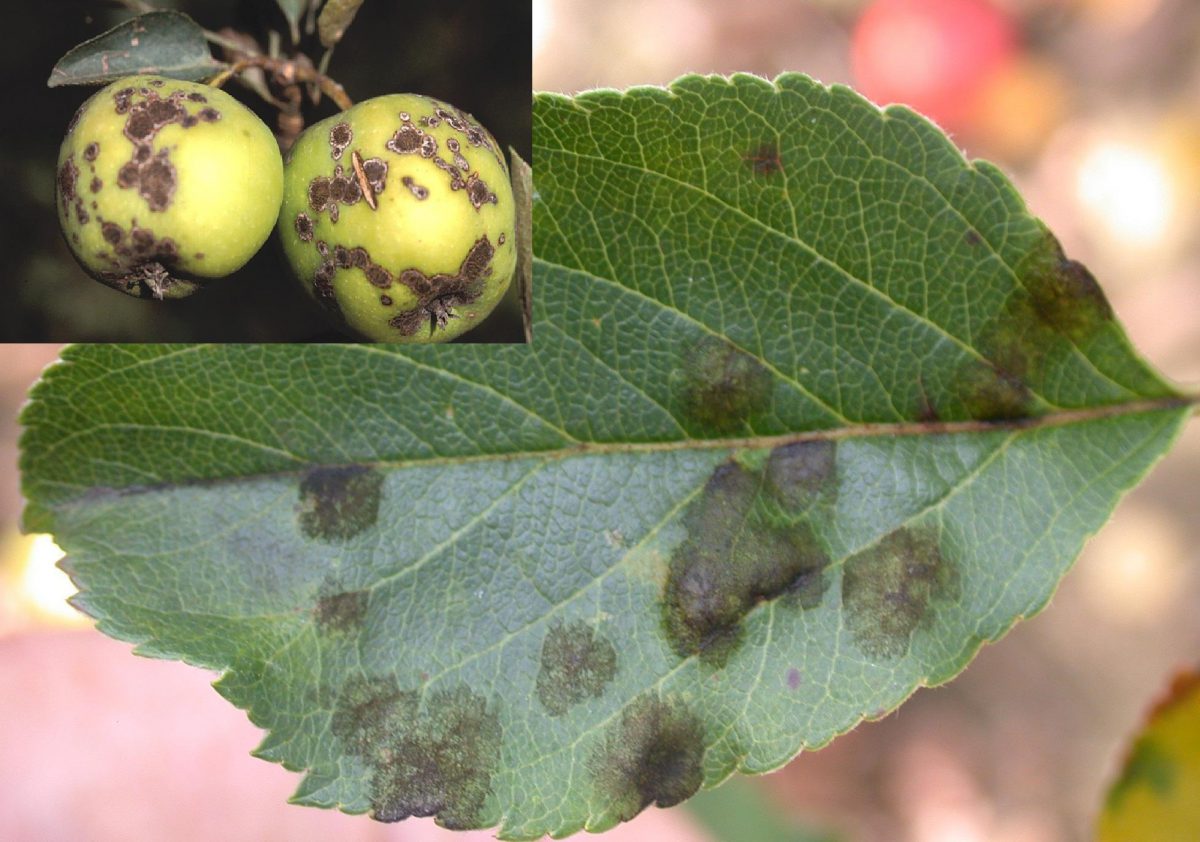
Prevention and control measures:
- planting resistant apple tree varieties;
- burning fallen leaves and fruit;
- applying treatments during dormancy period ;
- chemical treatments in vegetation with specific fungicides.
Recommended products
-
You can find products on a different store
Change Store -
You can find products on a different store
Change Store -
You can find products on a different store
Change Store -
You can find products on a different store
Change Store -
You can find products on a different store
Change Store -
You can find products on a different store
Change Store -
You can find products on a different store
Change Store -
You can find products on a different store
Change Store -
You can find products on a different store
Change Store -
You can find products on a different store
Change Store -
You can find products on a different store
Change Store -
You can find products on a different store
Change Store -
You can find products on a different store
Change Store -
You can find products on a different store
Change Store -
You can find products on a different store
Change Store -
You can find products on a different store
Change Store -
You can find products on a different store
Change Store -
You can find products on a different store
Change Store -
You can find products on a different store
Change Store -
You can find products on a different store
Change Store -
You can find products on a different store
Change Store -
You can find products on a different store
Change Store -
You can find products on a different store
Change Store -
You can find products on a different store
Change Store
Powdery mildew (Podosphaera leucotricha)
The attack occurs on young twigs leaves as white spots. These extend and cover the entire leaf. The disease progresses and the mycelium becomes greyish and dusty. Attacked tissues shrivel and dry out. The fungus also attacks young fruit. These get covered with white mycelial fuzz. The fruit cracks and rots.
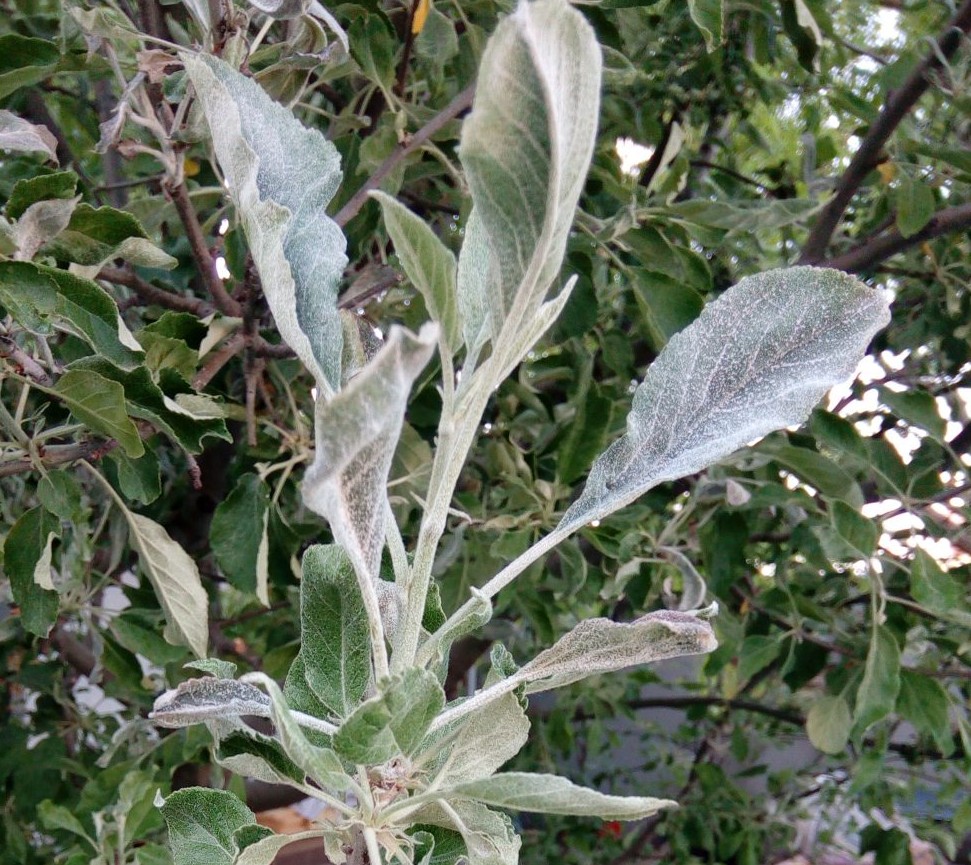
Prevention and control measures:
- balanced fertilization;
- planting resistant varieties;
- burning affected twigs and fruits;
- chemical treatments in vegetation with specific fungicides.
Recommended products
-
You can find products on a different store
Change Store -
You can find products on a different store
Change Store -
You can find products on a different store
Change Store -
You can find products on a different store
Change Store -
You can find products on a different store
Change Store -
You can find products on a different store
Change Store -
You can find products on a different store
Change Store -
You can find products on a different store
Change Store -
You can find products on a different store
Change Store -
You can find products on a different store
Change Store -
You can find products on a different store
Change Store -
You can find products on a different store
Change Store -
You can find products on a different store
Change Store -
You can find products on a different store
Change Store -
You can find products on a different store
Change Store -
You can find products on a different store
Change Store -
You can find products on a different store
Change Store -
You can find products on a different store
Change Store -
You can find products on a different store
Change Store -
You can find products on a different store
Change Store -
You can find products on a different store
Change Store -
You can find products on a different store
Change Store -
You can find products on a different store
Change Store -
You can find products on a different store
Change Store
Brown rot (Monilinia fructigena)
This disease attacks all aerial organs of trees, causing significant damage in cold and rainy years. Affected leaves hang down without falling off, flowers brown and wither, and branches bend into a hook shape. Young fruit shrivels, browns, and falls massively. The pulp of mature fruit rots and yellowish-grey spots appear on the outside. Eventually, the fruits mummify and remain on the tree, ensuring disease transmission into the following year. The fungus overwinters on the mummified fruit and in the bark of attacked branches.
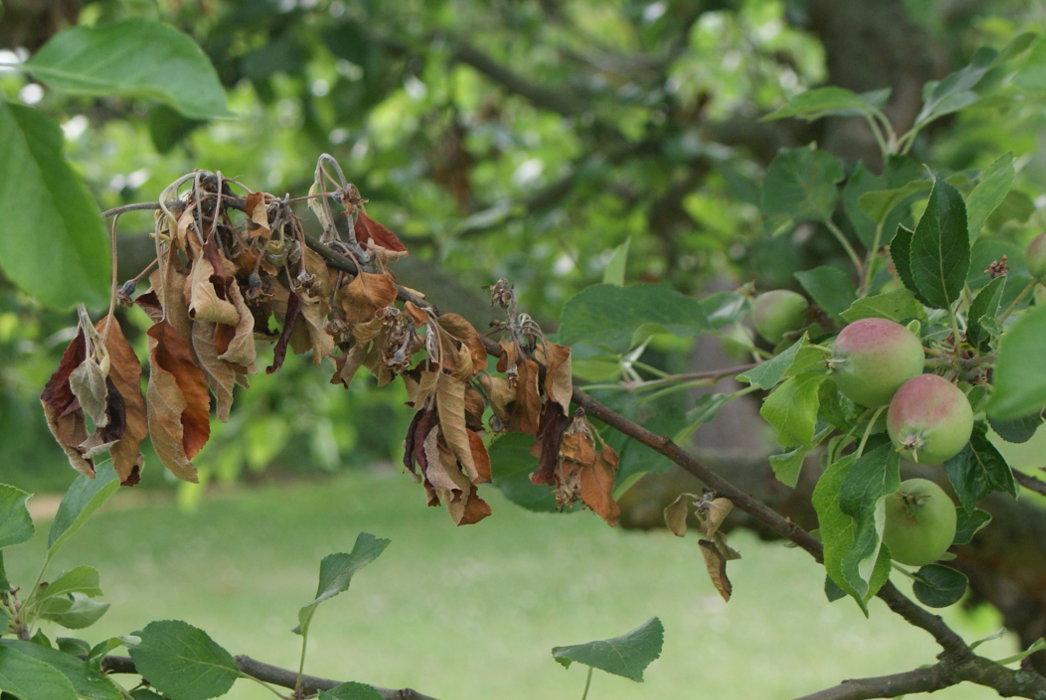
Prevention and control measures:
- gathering and destroying attacked fruits;
- pruning and burning of the affected branches;
- pruning the affected branches down to the healthy area, applying treatment with Bordeaux mixture, and covering the wounds with tree wound sealer;
- chemical treatments during the dormant period with copper-based products;
- preventive treatments in vegetation with specific fungicides.
Recommended products
-
You can find products on a different store
Change Store -
You can find products on a different store
Change Store -
You can find products on a different store
Change Store -
You can find products on a different store
Change Store -
You can find products on a different store
Change Store -
You can find products on a different store
Change Store -
You can find products on a different store
Change Store -
You can find products on a different store
Change Store -
You can find products on a different store
Change Store -
You can find products on a different store
Change Store -
You can find products on a different store
Change Store -
You can find products on a different store
Change Store -
You can find products on a different store
Change Store -
You can find products on a different store
Change Store -
You can find products on a different store
Change Store -
You can find products on a different store
Change Store -
You can find products on a different store
Change Store -
You can find products on a different store
Change Store -
You can find products on a different store
Change Store -
You can find products on a different store
Change Store -
You can find products on a different store
Change Store -
You can find products on a different store
Change Store -
You can find products on a different store
Change Store -
You can find products on a different store
Change Store
Anthracnose (Glomerella cingulata)
The attack appears on almost ripe fruit as large brown spots. The spots enlarge and develop circular formations on their surface representing the fungus fructifications. The fruits shrivel, dry out and fall off.
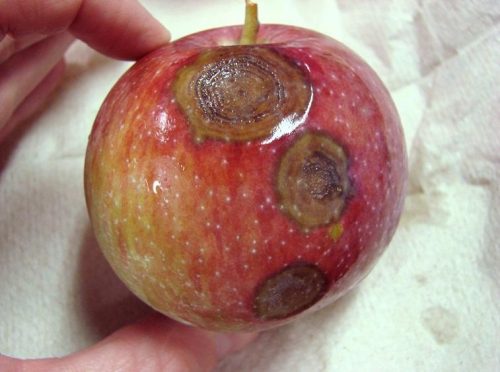
Prevention and control measures:
- burning of affected fruits;
- applying treatments during dormancy period ;
- chemical treatments in vegetation with specific fungicides.
Recommended products
-
You can find products on a different store
Change Store -
You can find products on a different store
Change Store -
You can find products on a different store
Change Store -
You can find products on a different store
Change Store -
You can find products on a different store
Change Store -
You can find products on a different store
Change Store -
You can find products on a different store
Change Store -
You can find products on a different store
Change Store -
You can find products on a different store
Change Store -
You can find products on a different store
Change Store -
You can find products on a different store
Change Store -
You can find products on a different store
Change Store -
You can find products on a different store
Change Store -
You can find products on a different store
Change Store -
You can find products on a different store
Change Store -
You can find products on a different store
Change Store -
You can find products on a different store
Change Store -
You can find products on a different store
Change Store -
You can find products on a different store
Change Store -
You can find products on a different store
Change Store -
You can find products on a different store
Change Store -
You can find products on a different store
Change Store -
You can find products on a different store
Change Store -
You can find products on a different store
Change Store
Cedar-apple rust (Gymnosporangium juniperi)
On the upper side you can see yellowish spots, with a slight reddish tinge, on which small black dots appear, representing the fungus fructifications. On the underside, the tissues bulge and form elongated, yellowish fungal fructifications. The fungus develops its first stages on the juniper, then the spores are transported by water and wind, affecting the apple.
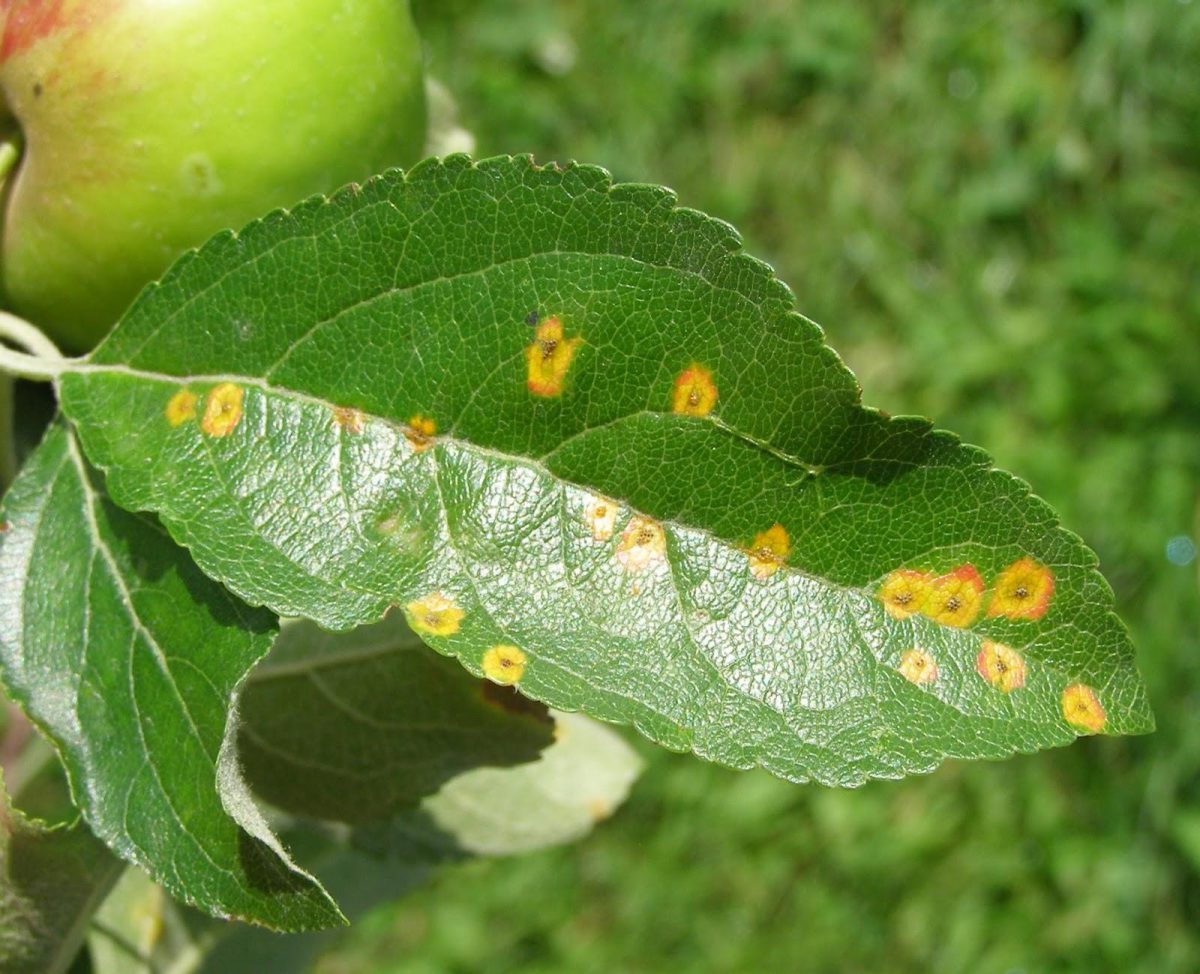
Prevention and control measures:
- planting resistant apple varieties;
- removing spontaneous shrubs in the orchard;
- chemical treatments with specific fungicides.
Recommended products
-
You can find products on a different store
Change Store -
You can find products on a different store
Change Store -
You can find products on a different store
Change Store -
You can find products on a different store
Change Store -
You can find products on a different store
Change Store -
You can find products on a different store
Change Store -
You can find products on a different store
Change Store -
You can find products on a different store
Change Store -
You can find products on a different store
Change Store -
You can find products on a different store
Change Store -
You can find products on a different store
Change Store -
You can find products on a different store
Change Store -
You can find products on a different store
Change Store -
You can find products on a different store
Change Store -
You can find products on a different store
Change Store -
You can find products on a different store
Change Store -
You can find products on a different store
Change Store -
You can find products on a different store
Change Store -
You can find products on a different store
Change Store -
You can find products on a different store
Change Store -
You can find products on a different store
Change Store -
You can find products on a different store
Change Store -
You can find products on a different store
Change Store -
You can find products on a different store
Change Store
Crown rot (Phytophthora spp.)
Symptoms consist of leaves wilting and browning. Trees have slowed growth and dry out prematurely. Bacterial cancer-like lesions appear in the crown area. In wet weather, the lesions get covered with a sticky ooze. This disease develops in conditions of excessive soil moisture.
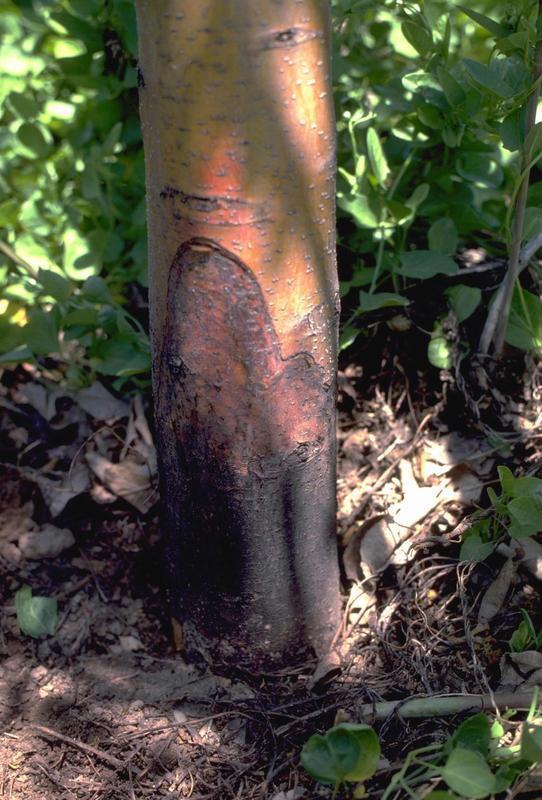
Prevention and control measures:
- rational irrigation;
- there is no treatment for this disease.
The main pests of apple trees
Oriental fruit moth (Grapholita molesta)
It has 3-4 generations per year and overwinters like a larva in a silky cocoon in the cracks of the bark. This moth attacks the twigs, leaves, and fruits of the apple tree, but it does the most damage to the fruit. The larvae of the first generations attack the twigs and feed on them, causing great damage to newly established orchards and nurseries. The larvae of generations III and IV cause significant damage to the fruit. They enter the fruit through the stalk area or the “tip” area and gnaw irregular galleries around the seeds. Fruits stagnate from growth, rot, and fall.
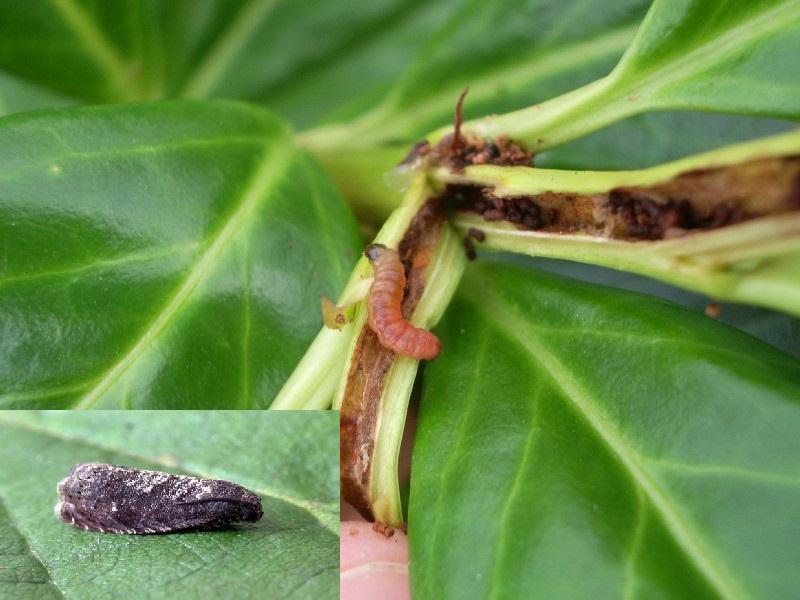
Control methods:
- pruning and destroying attacked fruits and twigs;
- using attractant traps;
- chemical treatments applied during mass flight with specific insecticides.
Recommended products
-
You can find products on a different store
Change Store -
You can find products on a different store
Change Store -
You can find products on a different store
Change Store -
You can find products on a different store
Change Store -
You can find products on a different store
Change Store -
You can find products on a different store
Change Store -
You can find products on a different store
Change Store -
You can find products on a different store
Change Store -
You can find products on a different store
Change Store -
You can find products on a different store
Change Store -
You can find products on a different store
Change Store -
You can find products on a different store
Change Store -
You can find products on a different store
Change Store -
You can find products on a different store
Change Store -
You can find products on a different store
Change Store -
You can find products on a different store
Change Store -
You can find products on a different store
Change Store -
You can find products on a different store
Change Store -
You can find products on a different store
Change Store -
You can find products on a different store
Change Store -
You can find products on a different store
Change Store -
You can find products on a different store
Change Store -
You can find products on a different store
Change Store -
You can find products on a different store
Change Store
Summer fruit tortrix (Adoxophyes orana)
It is a polyphagous species that attacks over 47 species of herbaceous and woody plants (including the apple tree). In spring, the larvae gnaw on buds, flowers, and leaves. The larvae enter the fruit where they dig shallow galleries. The wounds made are the entry points for fungi of the genus Monilinia.
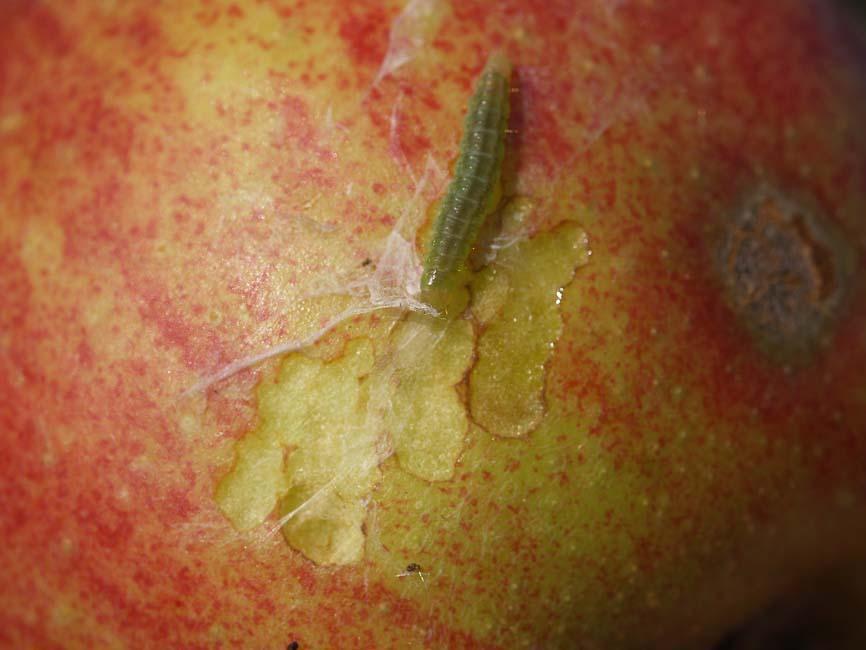
Control methods:
- chemical treatments with specific insecticides.
Recommended products
-
You can find products on a different store
Change Store -
You can find products on a different store
Change Store -
You can find products on a different store
Change Store -
You can find products on a different store
Change Store -
You can find products on a different store
Change Store -
You can find products on a different store
Change Store -
You can find products on a different store
Change Store -
You can find products on a different store
Change Store -
You can find products on a different store
Change Store -
You can find products on a different store
Change Store -
You can find products on a different store
Change Store -
You can find products on a different store
Change Store -
You can find products on a different store
Change Store -
You can find products on a different store
Change Store -
You can find products on a different store
Change Store -
You can find products on a different store
Change Store -
You can find products on a different store
Change Store -
You can find products on a different store
Change Store -
You can find products on a different store
Change Store -
You can find products on a different store
Change Store -
You can find products on a different store
Change Store -
You can find products on a different store
Change Store -
You can find products on a different store
Change Store -
You can find products on a different store
Change Store
Codling moth (Cydia pomonella)
It is a polyphagous species that attacks several species of fruit trees. Larvae of different ages attack the fruit. Females lay their eggs directly on the fruit or on the leaves near the fruit. After hatching, the larvae dig galleries in the fruit, leaving droppings inside.
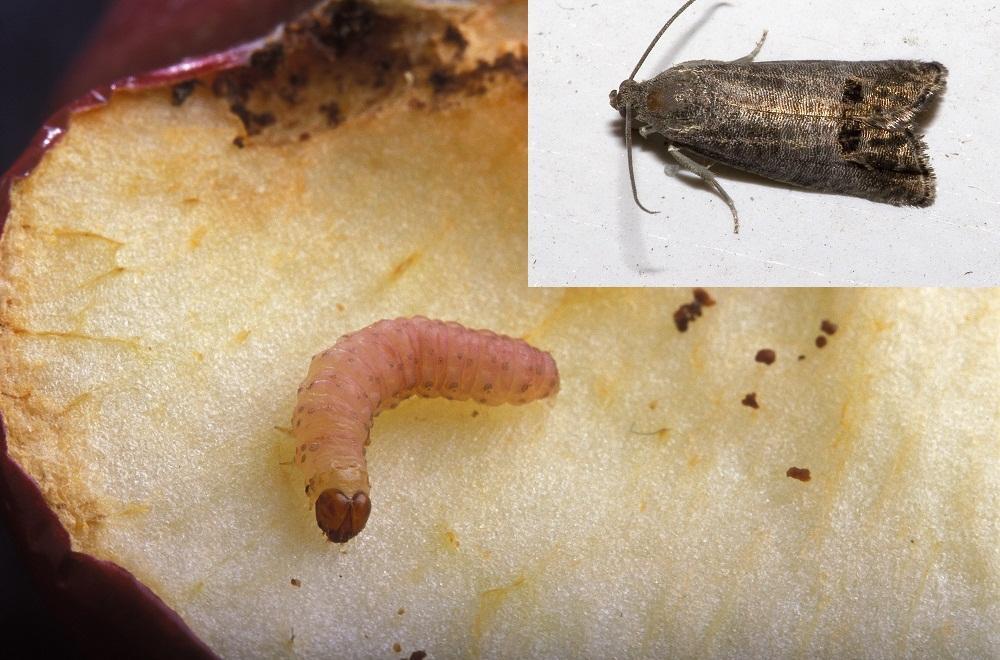
Control methods:
- using pheromone traps to identify adult flight;
- chemical treatments with specific insecticides.
Recommended products
-
You can find products on a different store
Change Store -
You can find products on a different store
Change Store -
You can find products on a different store
Change Store -
You can find products on a different store
Change Store -
You can find products on a different store
Change Store -
You can find products on a different store
Change Store -
You can find products on a different store
Change Store -
You can find products on a different store
Change Store -
You can find products on a different store
Change Store -
You can find products on a different store
Change Store -
You can find products on a different store
Change Store -
You can find products on a different store
Change Store -
You can find products on a different store
Change Store -
You can find products on a different store
Change Store -
You can find products on a different store
Change Store -
You can find products on a different store
Change Store -
You can find products on a different store
Change Store -
You can find products on a different store
Change Store -
You can find products on a different store
Change Store -
You can find products on a different store
Change Store -
You can find products on a different store
Change Store -
You can find products on a different store
Change Store -
You can find products on a different store
Change Store -
You can find products on a different store
Change Store
The apple aphid (Aphis pomi)
It is a polyphagous species that attacks several species of fruit trees. Aphids colonize the underside leaves and growing tips. The attacked trees have small growths, the fruits remain small, the production is strongly affected. Aphids also transmit several viruses.
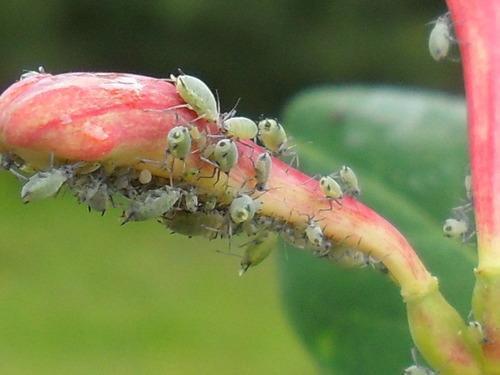
Control methods:
- chemical treatments with specific insecticides.
Recommended products
-
You can find products on a different store
Change Store -
You can find products on a different store
Change Store -
You can find products on a different store
Change Store -
You can find products on a different store
Change Store -
You can find products on a different store
Change Store -
You can find products on a different store
Change Store -
You can find products on a different store
Change Store -
You can find products on a different store
Change Store -
You can find products on a different store
Change Store -
You can find products on a different store
Change Store -
You can find products on a different store
Change Store -
You can find products on a different store
Change Store -
You can find products on a different store
Change Store -
You can find products on a different store
Change Store -
You can find products on a different store
Change Store -
You can find products on a different store
Change Store -
You can find products on a different store
Change Store -
You can find products on a different store
Change Store -
You can find products on a different store
Change Store -
You can find products on a different store
Change Store -
You can find products on a different store
Change Store -
You can find products on a different store
Change Store -
You can find products on a different store
Change Store -
You can find products on a different store
Change Store
Rosy leaf-curling apple aphids (Dysaphis devecta)
It attacks the trees in spring, starting from bud break, attacking buds, leaves and young twigs. The pests can be seen on the lower part of the leaf, and on the upper part, the leaves become swollen and pinkish. Attacked trees have weak growth, the twigs become deformed and the fruits remain small.
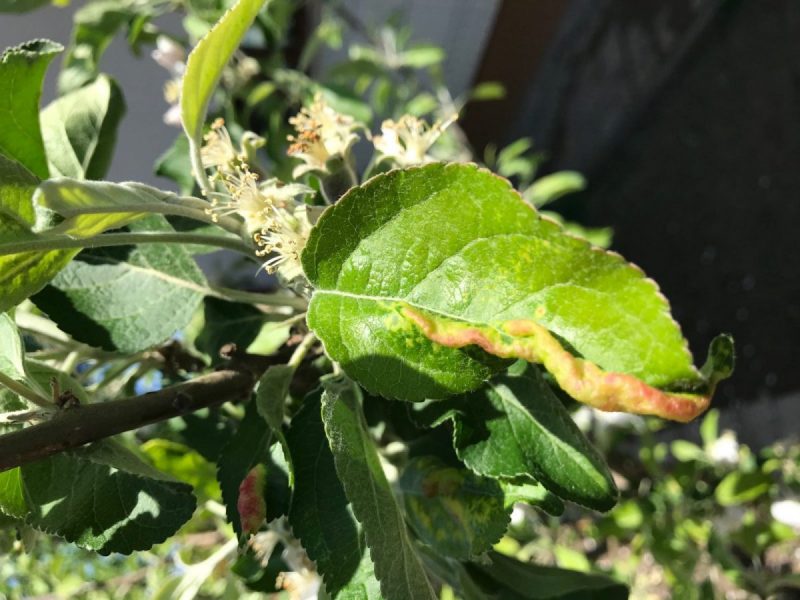
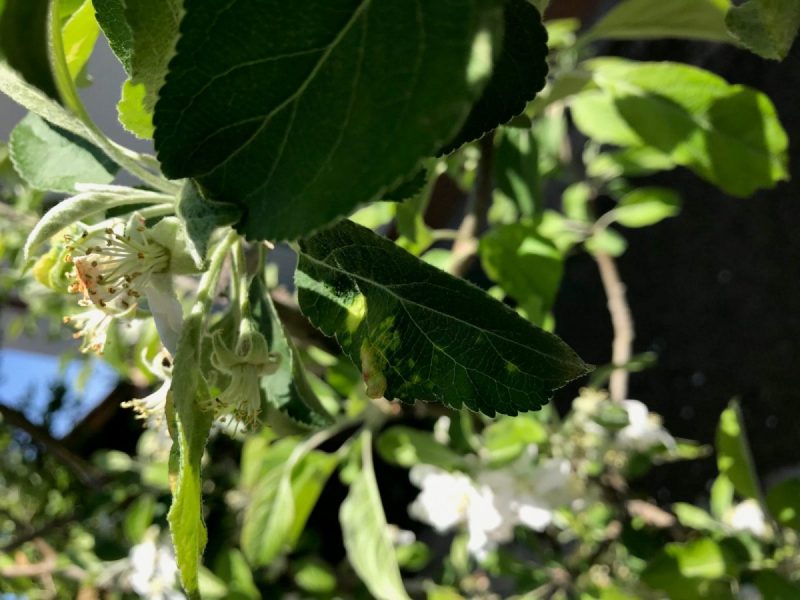
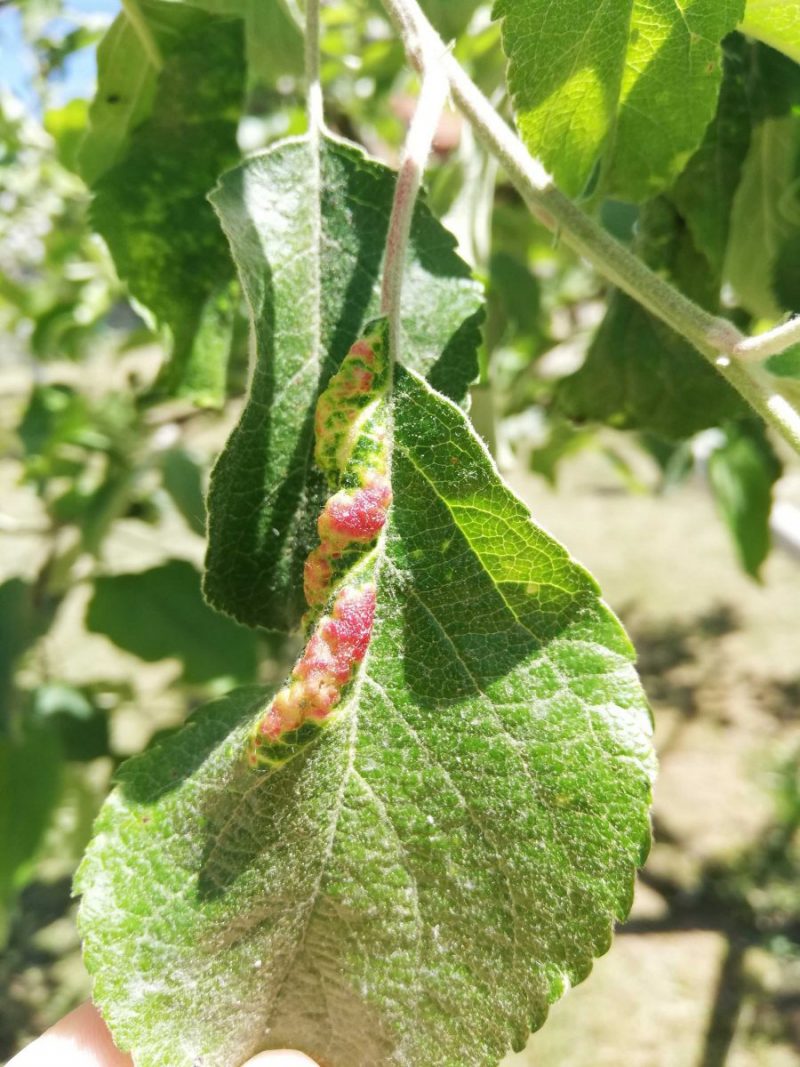
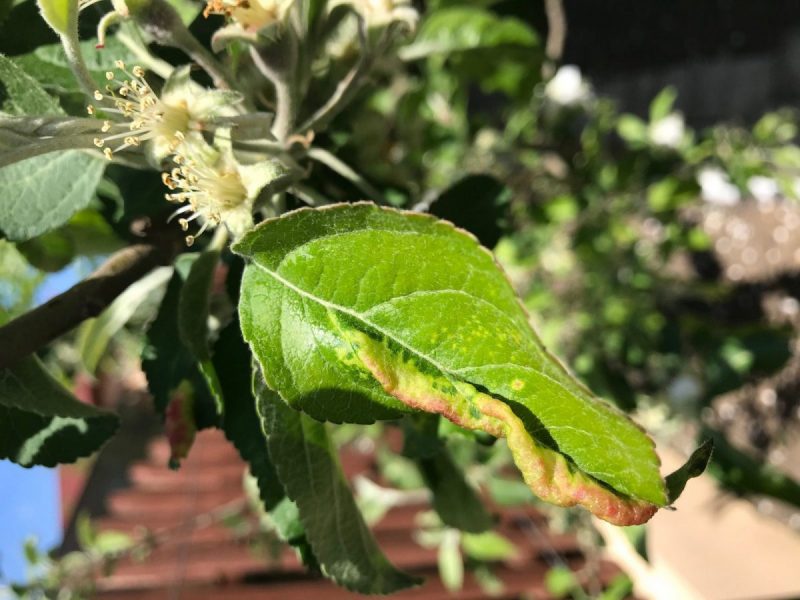
Control methods:
- dormant period treatments with horticultural oil;
- carrying out treatments with insecticides specific to aphid control;
Recommended products
-
You can find products on a different store
Change Store -
You can find products on a different store
Change Store -
You can find products on a different store
Change Store -
You can find products on a different store
Change Store -
You can find products on a different store
Change Store -
You can find products on a different store
Change Store -
You can find products on a different store
Change Store -
You can find products on a different store
Change Store -
You can find products on a different store
Change Store -
You can find products on a different store
Change Store -
You can find products on a different store
Change Store -
You can find products on a different store
Change Store -
You can find products on a different store
Change Store -
You can find products on a different store
Change Store -
You can find products on a different store
Change Store -
You can find products on a different store
Change Store -
You can find products on a different store
Change Store -
You can find products on a different store
Change Store -
You can find products on a different store
Change Store -
You can find products on a different store
Change Store -
You can find products on a different store
Change Store -
You can find products on a different store
Change Store -
You can find products on a different store
Change Store -
You can find products on a different store
Change Store
Spotted tentiform leafminer (Phyllonorycter blancardella)
This insect attacks several ornamental shrubs and fruit trees (including the apple tree). The larvae feed on the tissues between the upper and lower leaf epidermis. A massive attack can severely reduce photosynthesis capacity and thus lower yields.
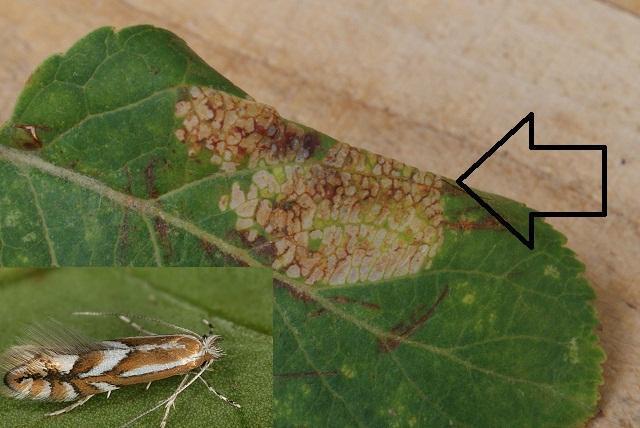
Control methods:
- collecting and destroying fallen leaves on the ground;
- chemical treatments with specific insecticides.
Recommended products
-
You can find products on a different store
Change Store -
You can find products on a different store
Change Store -
You can find products on a different store
Change Store -
You can find products on a different store
Change Store -
You can find products on a different store
Change Store -
You can find products on a different store
Change Store -
You can find products on a different store
Change Store -
You can find products on a different store
Change Store -
You can find products on a different store
Change Store -
You can find products on a different store
Change Store -
You can find products on a different store
Change Store -
You can find products on a different store
Change Store -
You can find products on a different store
Change Store -
You can find products on a different store
Change Store -
You can find products on a different store
Change Store -
You can find products on a different store
Change Store -
You can find products on a different store
Change Store -
You can find products on a different store
Change Store -
You can find products on a different store
Change Store -
You can find products on a different store
Change Store -
You can find products on a different store
Change Store -
You can find products on a different store
Change Store -
You can find products on a different store
Change Store -
You can find products on a different store
Change Store
Brown-tail moth (Euproctis chrysorrhoea)
It is a polyphagous species that attacks several trees and fruit trees. It has one generation per year and overwinters like a larva in a cocoon at the top of the twigs. The larvae attack buds and leaves and may cause tree defoliation. To detect the presence of this pest, trees should be examined very carefully.
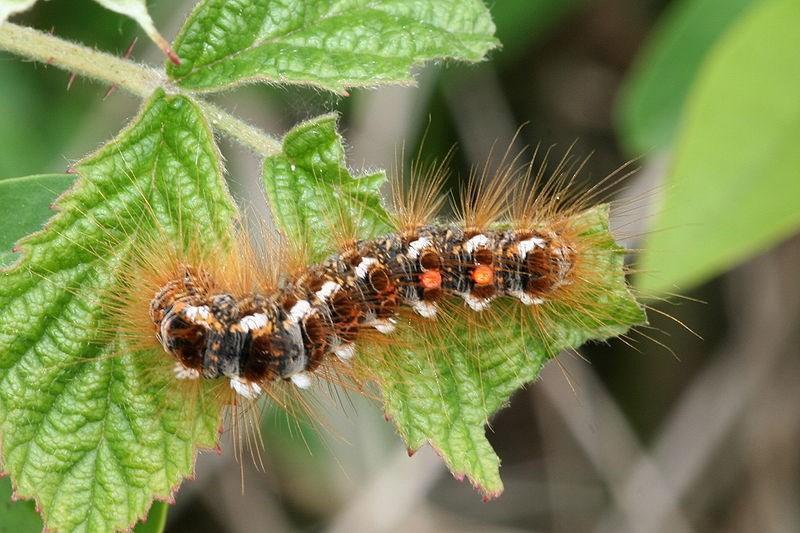
Control methods:
- removing branches on which larvae are present;
- chemical treatments with specific insecticides.
Recommended products
-
You can find products on a different store
Change Store -
You can find products on a different store
Change Store -
You can find products on a different store
Change Store -
You can find products on a different store
Change Store -
You can find products on a different store
Change Store -
You can find products on a different store
Change Store -
You can find products on a different store
Change Store -
You can find products on a different store
Change Store -
You can find products on a different store
Change Store -
You can find products on a different store
Change Store -
You can find products on a different store
Change Store -
You can find products on a different store
Change Store -
You can find products on a different store
Change Store -
You can find products on a different store
Change Store -
You can find products on a different store
Change Store -
You can find products on a different store
Change Store -
You can find products on a different store
Change Store -
You can find products on a different store
Change Store -
You can find products on a different store
Change Store -
You can find products on a different store
Change Store -
You can find products on a different store
Change Store -
You can find products on a different store
Change Store -
You can find products on a different store
Change Store -
You can find products on a different store
Change Store
Fall webworm moth (Hyphantria cunea)
It is a polyphagous species that attacks ornamental trees (mulberry, plane tree, etc.) as well as fruit tree species. It has two generations per year and overwinters as a pupa in the surface layer of the soil. This pest causes tree defoliation and thus lower fruit production. The caterpillars settle on the underside of the leaves and begin to consume them. They also build a kind of nest, inside which they feed.
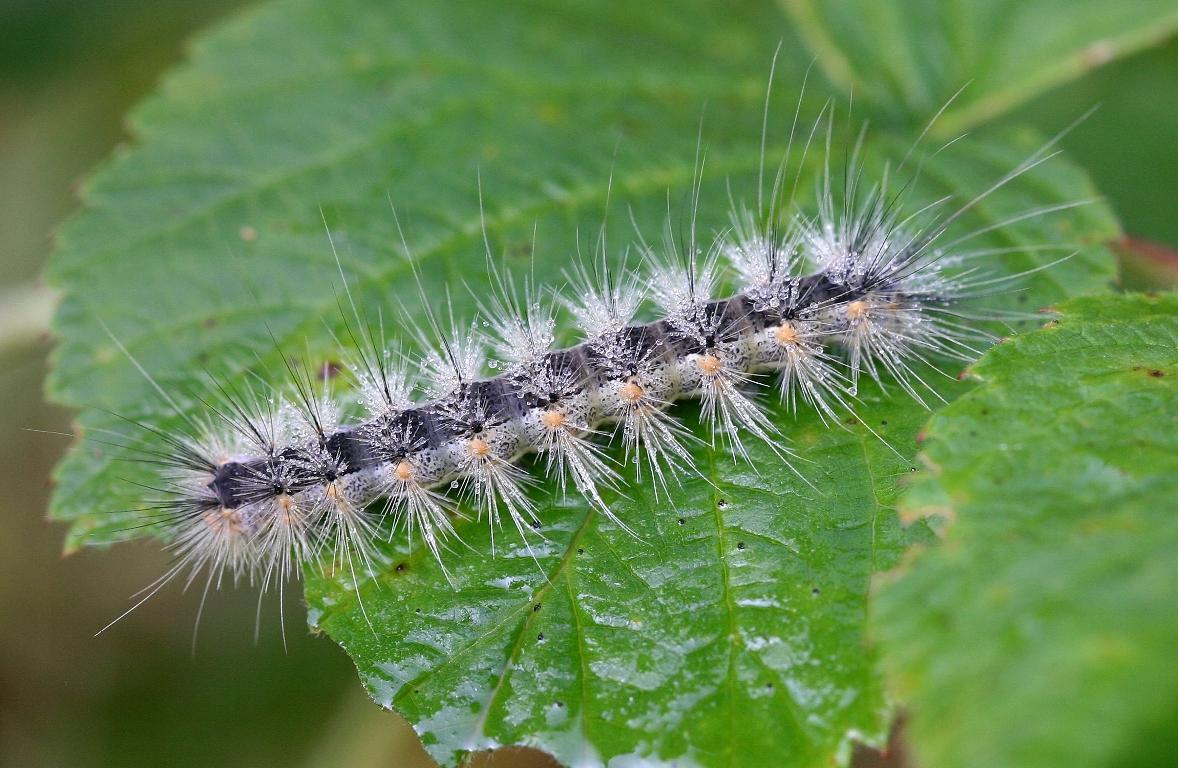
Control methods:
- chemical treatments with specific insecticides.
Recommended products
-
You can find products on a different store
Change Store -
You can find products on a different store
Change Store -
You can find products on a different store
Change Store -
You can find products on a different store
Change Store -
You can find products on a different store
Change Store -
You can find products on a different store
Change Store -
You can find products on a different store
Change Store -
You can find products on a different store
Change Store -
You can find products on a different store
Change Store -
You can find products on a different store
Change Store -
You can find products on a different store
Change Store -
You can find products on a different store
Change Store -
You can find products on a different store
Change Store -
You can find products on a different store
Change Store -
You can find products on a different store
Change Store -
You can find products on a different store
Change Store -
You can find products on a different store
Change Store -
You can find products on a different store
Change Store -
You can find products on a different store
Change Store -
You can find products on a different store
Change Store -
You can find products on a different store
Change Store -
You can find products on a different store
Change Store -
You can find products on a different store
Change Store -
You can find products on a different store
Change Store
Sciaphobus squalidus
It is a dangerous species that attacks mainly buds and flower buds. It develops one generation every two years and overwinters as an adult in the topsoil. In spring, the adults emerge and climb the trees and feed on the buds and flower buds. The larvae are not harmful to trees, they feed on the roots of spontaneous herbaceous plants.
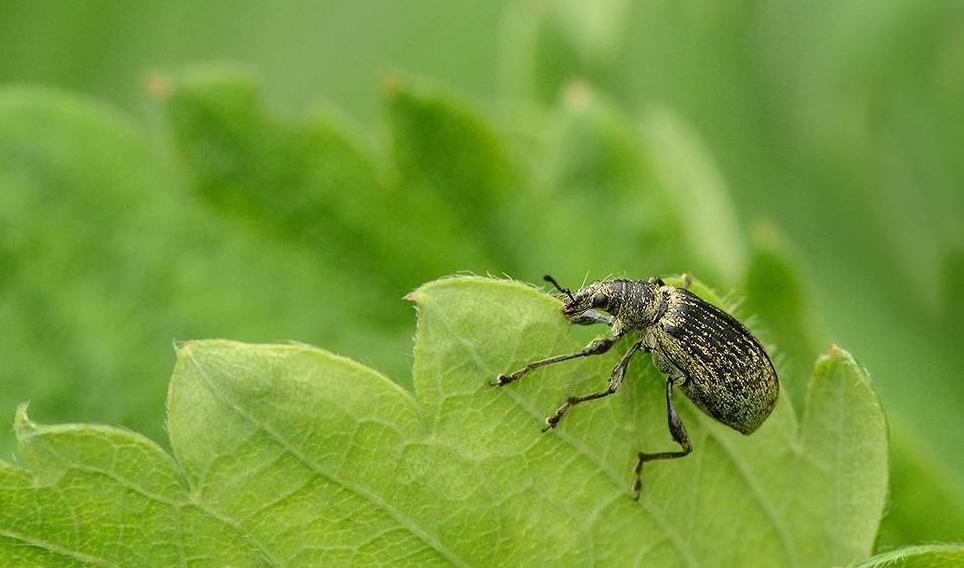
Control methods:
- soil mobilization in the orchard (autumn);
- chemical treatments with specific insecticides.
Recommended products
-
You can find products on a different store
Change Store -
You can find products on a different store
Change Store -
You can find products on a different store
Change Store -
You can find products on a different store
Change Store -
You can find products on a different store
Change Store -
You can find products on a different store
Change Store -
You can find products on a different store
Change Store -
You can find products on a different store
Change Store -
You can find products on a different store
Change Store -
You can find products on a different store
Change Store -
You can find products on a different store
Change Store -
You can find products on a different store
Change Store -
You can find products on a different store
Change Store -
You can find products on a different store
Change Store -
You can find products on a different store
Change Store -
You can find products on a different store
Change Store -
You can find products on a different store
Change Store -
You can find products on a different store
Change Store -
You can find products on a different store
Change Store -
You can find products on a different store
Change Store -
You can find products on a different store
Change Store -
You can find products on a different store
Change Store -
You can find products on a different store
Change Store -
You can find products on a different store
Change Store
The peach twig borer (Anarsia lineatella)
It is a polyphagous species that attacks several species of fruit trees (including the apple tree). It develops three generations per year and overwinters as a larva under the exfoliated bark. In the spring, they leave the winter shelter and attack the buds. In young twigs, the larvae gnaw penetrating holes. Newly emerged females lay eggs on the buds, and the larvae will penetrate the fruits of the early varieties. The larvae of the next generations penetrate the fruits in the ripening phase, where they dig deep galleries.
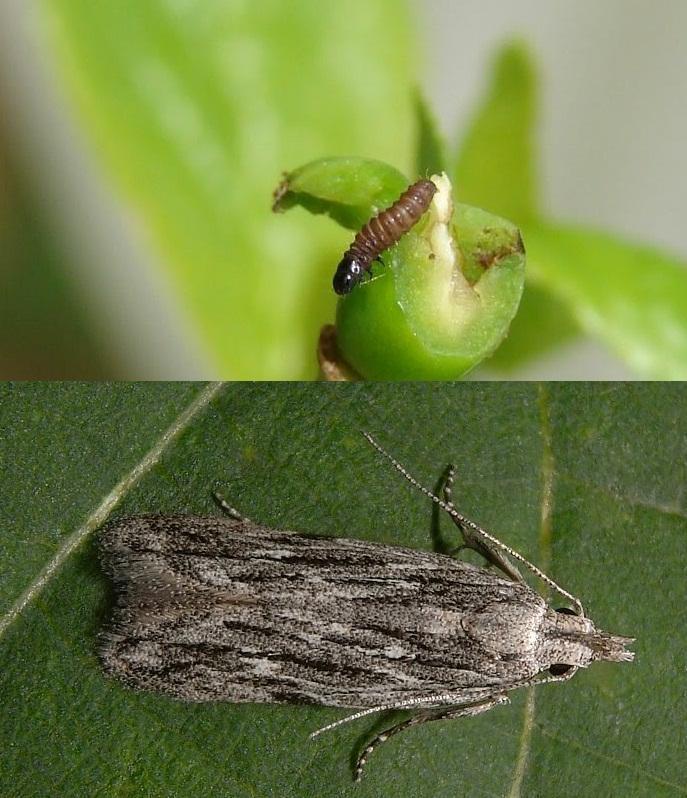
Control methods:
- pruning and destroying the affected branches (twigs);
- chemical treatments with specific insecticides.
Recommended products
-
You can find products on a different store
Change Store -
You can find products on a different store
Change Store -
You can find products on a different store
Change Store -
You can find products on a different store
Change Store -
You can find products on a different store
Change Store -
You can find products on a different store
Change Store -
You can find products on a different store
Change Store -
You can find products on a different store
Change Store -
You can find products on a different store
Change Store -
You can find products on a different store
Change Store -
You can find products on a different store
Change Store -
You can find products on a different store
Change Store -
You can find products on a different store
Change Store -
You can find products on a different store
Change Store -
You can find products on a different store
Change Store -
You can find products on a different store
Change Store -
You can find products on a different store
Change Store -
You can find products on a different store
Change Store -
You can find products on a different store
Change Store -
You can find products on a different store
Change Store -
You can find products on a different store
Change Store -
You can find products on a different store
Change Store -
You can find products on a different store
Change Store -
You can find products on a different store
Change Store
Citrus flatid planthopper (Metcalfa pruinosa)
It is a polyphagous species that attack vines, ornamental trees, shrubs, and fruit trees (including the apple tree). It develops one generation per year and overwinters in the egg stage in the branches of the attacked plants. Adults and larvae feed on the sap of attacked plants, preventing plant growth and spreading numerous diseases and viruses. Fighting this species is very difficult because of the waxy layer covering the insect’s body. For this reason, the planthopper can quite easily be confused with the woolly apple aphid (Eriosoma lanigerum).
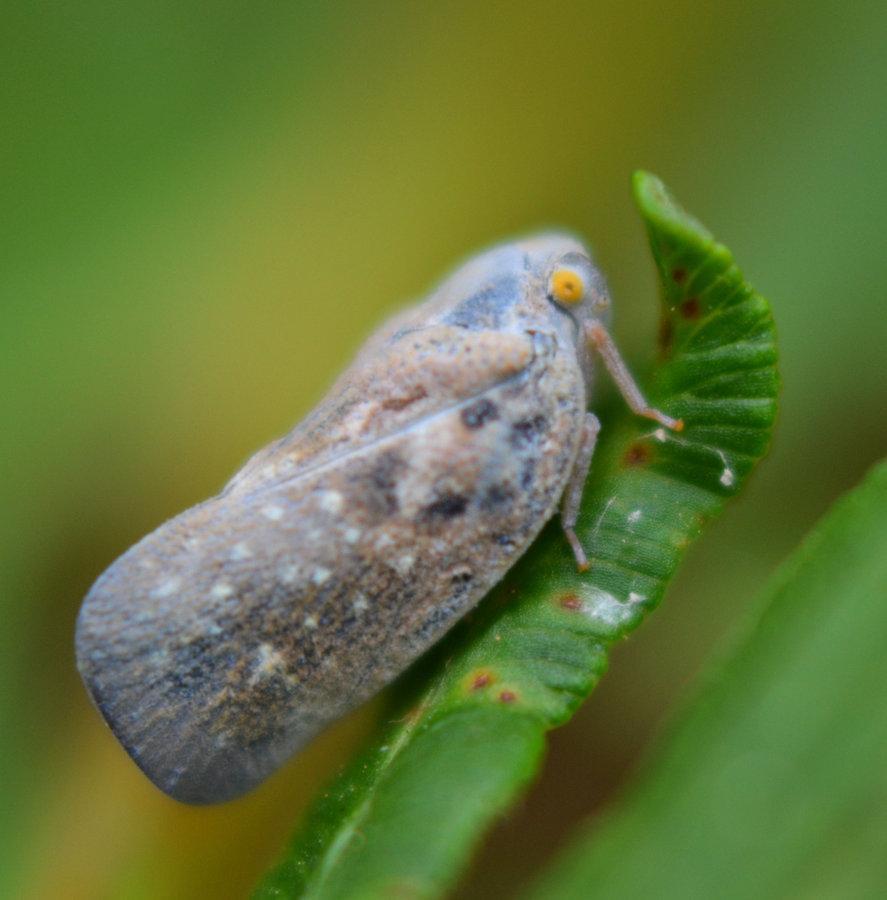
Control methods:
- chemical treatments with specific insecticides.
Recommended products
-
You can find products on a different store
Change Store -
You can find products on a different store
Change Store -
You can find products on a different store
Change Store -
You can find products on a different store
Change Store -
You can find products on a different store
Change Store -
You can find products on a different store
Change Store -
You can find products on a different store
Change Store -
You can find products on a different store
Change Store -
You can find products on a different store
Change Store -
You can find products on a different store
Change Store -
You can find products on a different store
Change Store -
You can find products on a different store
Change Store -
You can find products on a different store
Change Store -
You can find products on a different store
Change Store -
You can find products on a different store
Change Store -
You can find products on a different store
Change Store -
You can find products on a different store
Change Store -
You can find products on a different store
Change Store -
You can find products on a different store
Change Store -
You can find products on a different store
Change Store -
You can find products on a different store
Change Store -
You can find products on a different store
Change Store -
You can find products on a different store
Change Store -
You can find products on a different store
Change Store
European apple sawfly (Hoplocampa testudinea)
They develop one generation per year and hibernate as larvae in the soil. The females lay eggs on the fruit in the calyx area. After hatching, the larvae consume the peel, then enter the fruit and feed on the seeds. Following the attack, the fruit remains small and falls off.
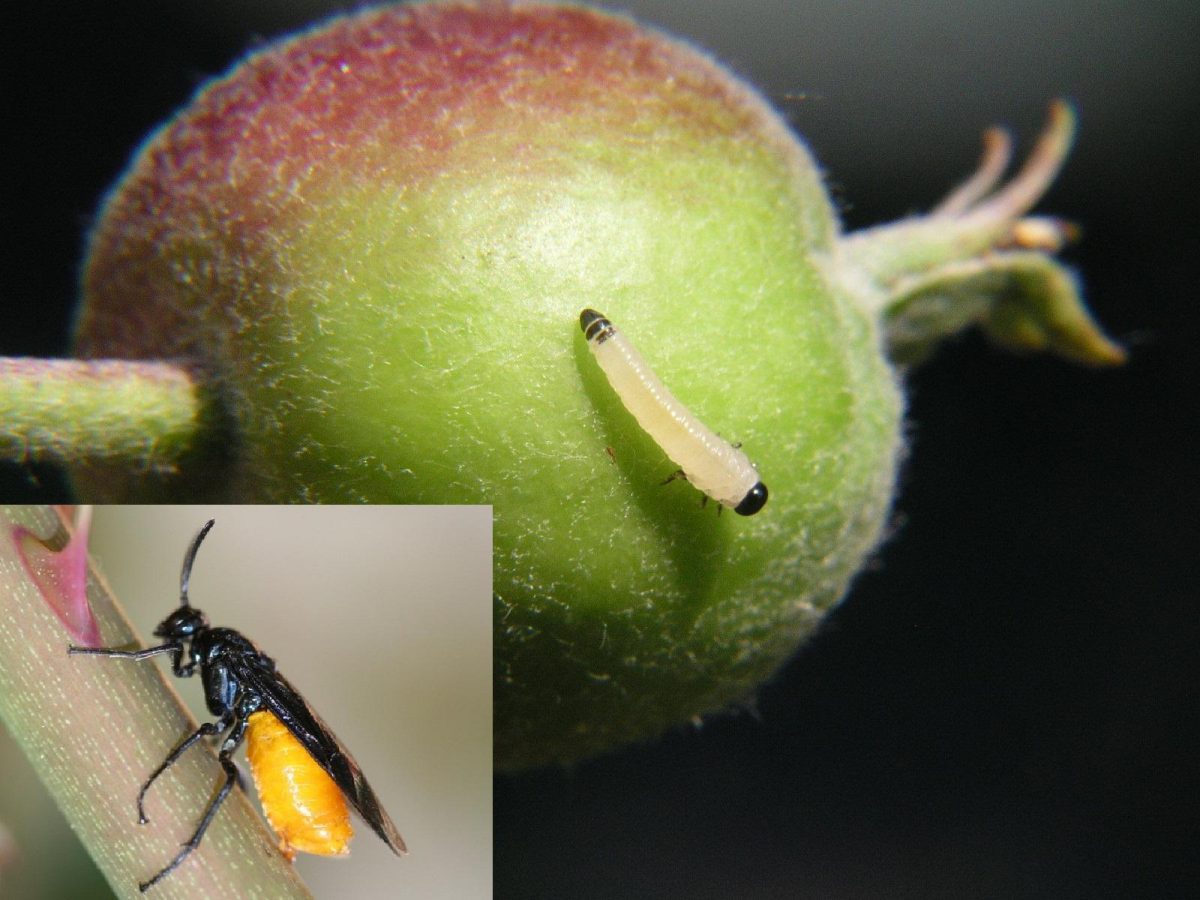
Control methods:
- mobilising the soil in the orchard;
- burning fallen fruit;
- chemical treatments with specific insecticides.
Recommended products
-
You can find products on a different store
Change Store -
You can find products on a different store
Change Store -
You can find products on a different store
Change Store -
You can find products on a different store
Change Store -
You can find products on a different store
Change Store -
You can find products on a different store
Change Store -
You can find products on a different store
Change Store -
You can find products on a different store
Change Store -
You can find products on a different store
Change Store -
You can find products on a different store
Change Store -
You can find products on a different store
Change Store -
You can find products on a different store
Change Store -
You can find products on a different store
Change Store -
You can find products on a different store
Change Store -
You can find products on a different store
Change Store -
You can find products on a different store
Change Store -
You can find products on a different store
Change Store -
You can find products on a different store
Change Store -
You can find products on a different store
Change Store -
You can find products on a different store
Change Store -
You can find products on a different store
Change Store -
You can find products on a different store
Change Store -
You can find products on a different store
Change Store -
You can find products on a different store
Change Store
Wooly apple aphid (Eriosoma lanigerum)
They have 8-12 generations per year and hibernate as larvae in the bark cracks. Develops massive colonies on twigs, branches and roots. Following the attack, tissues hypertrophy and tumours similar to those produced by bacterial cancer appear.
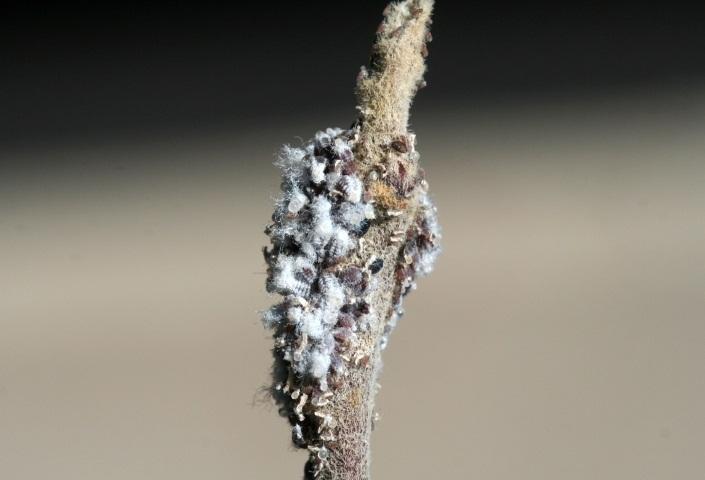
Control methods:
- pruning and burning the attacked branches;
- checking the apple saplings before planting;
- chemical treatments with specific insecticides.
Recommended products
-
You can find products on a different store
Change Store -
You can find products on a different store
Change Store -
You can find products on a different store
Change Store -
You can find products on a different store
Change Store -
You can find products on a different store
Change Store -
You can find products on a different store
Change Store -
You can find products on a different store
Change Store -
You can find products on a different store
Change Store -
You can find products on a different store
Change Store -
You can find products on a different store
Change Store -
You can find products on a different store
Change Store -
You can find products on a different store
Change Store -
You can find products on a different store
Change Store -
You can find products on a different store
Change Store -
You can find products on a different store
Change Store -
You can find products on a different store
Change Store -
You can find products on a different store
Change Store -
You can find products on a different store
Change Store -
You can find products on a different store
Change Store -
You can find products on a different store
Change Store -
You can find products on a different store
Change Store -
You can find products on a different store
Change Store -
You can find products on a different store
Change Store -
You can find products on a different store
Change Store
Apple leaf-curling midge (Dasineura mali)
It develops 3-4 generations per year and overwinters in the topsoil. The first signs of attack appear in May, when on the apple tree you can see rolled and discolored leaves. Inside these leaves, you can find orange-yellow worm larvae. In case of a strong attack, photosynthesis capacity and production are reduced.
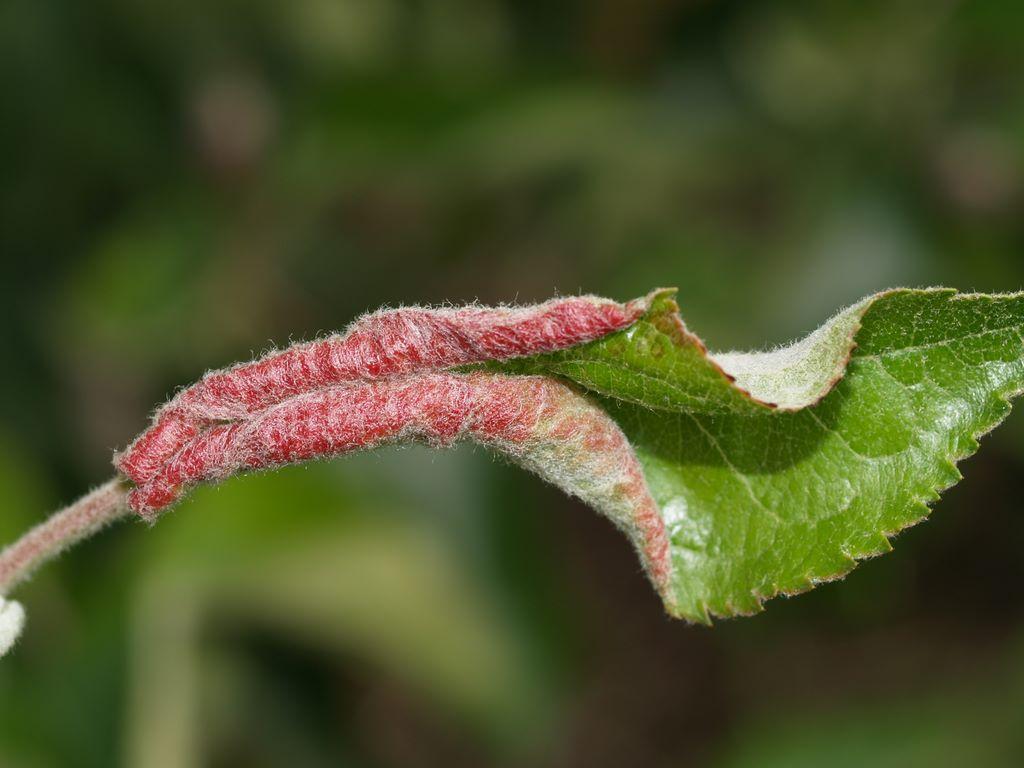
Control methods:
- chemical treatments with specific insecticides.
Apple blossom weevil (Anthonomus pomorum)
It develops one generation per year and overwinters as an adult in sheltered places (tree bark). Adults emerge in spring and feed on young leaves. Females lay eggs in flowers or flower buds. Larvae feed inside the flowers or buds.
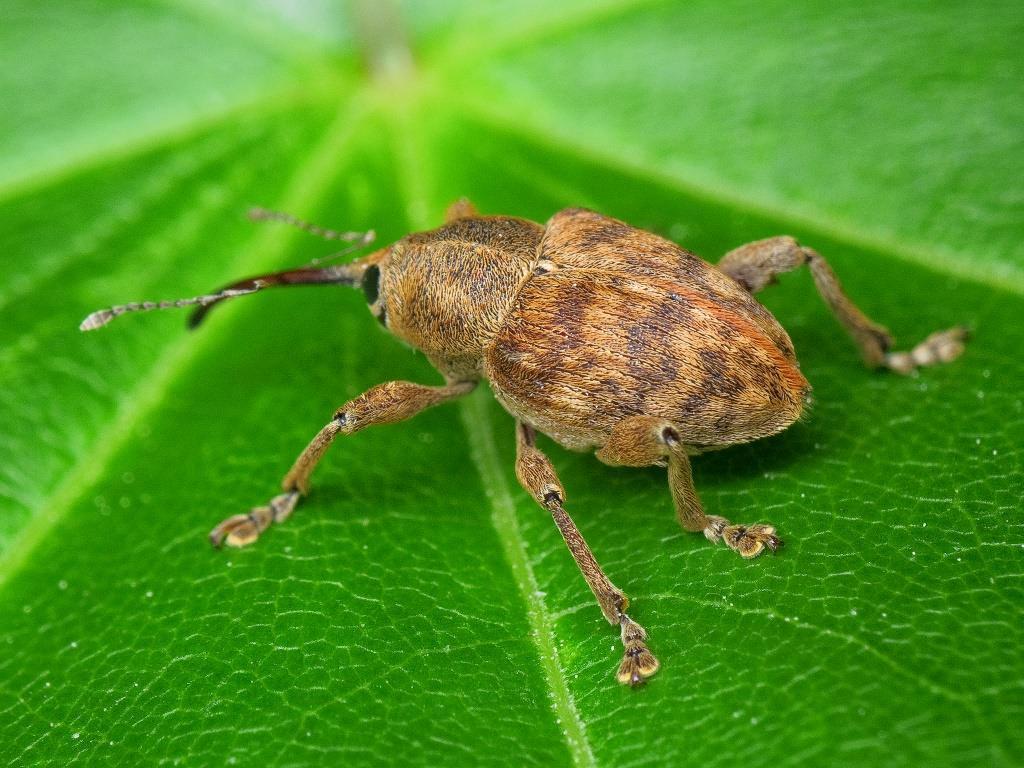
Control methods:
- chemical treatments with specific insecticides.
Recommended products
-
You can find products on a different store
Change Store -
You can find products on a different store
Change Store -
You can find products on a different store
Change Store -
You can find products on a different store
Change Store -
You can find products on a different store
Change Store -
You can find products on a different store
Change Store -
You can find products on a different store
Change Store -
You can find products on a different store
Change Store -
You can find products on a different store
Change Store -
You can find products on a different store
Change Store -
You can find products on a different store
Change Store -
You can find products on a different store
Change Store -
You can find products on a different store
Change Store -
You can find products on a different store
Change Store -
You can find products on a different store
Change Store -
You can find products on a different store
Change Store -
You can find products on a different store
Change Store -
You can find products on a different store
Change Store -
You can find products on a different store
Change Store -
You can find products on a different store
Change Store -
You can find products on a different store
Change Store -
You can find products on a different store
Change Store -
You can find products on a different store
Change Store -
You can find products on a different store
Change Store
Spider mites
They are pests that are very difficult to see with the naked eye. Spider mites are polyphagous species that attack many plants and fruit trees, both cultivated and wild species. They feed on plant sap. Following the attack, the leaves look parched, the flowers abort and the plant stagnates in growth.

Control methods:
- chemical treatments with specific insecticides.
Recommended products
-
You can find products on a different store
Change Store -
You can find products on a different store
Change Store -
You can find products on a different store
Change Store -
You can find products on a different store
Change Store -
You can find products on a different store
Change Store -
You can find products on a different store
Change Store -
You can find products on a different store
Change Store -
You can find products on a different store
Change Store -
You can find products on a different store
Change Store -
You can find products on a different store
Change Store -
You can find products on a different store
Change Store -
You can find products on a different store
Change Store -
You can find products on a different store
Change Store -
You can find products on a different store
Change Store -
You can find products on a different store
Change Store -
You can find products on a different store
Change Store -
You can find products on a different store
Change Store -
You can find products on a different store
Change Store -
You can find products on a different store
Change Store -
You can find products on a different store
Change Store -
You can find products on a different store
Change Store -
You can find products on a different store
Change Store -
You can find products on a different store
Change Store -
You can find products on a different store
Change Store














































































































































































































































































































































































































































